Related Research Articles
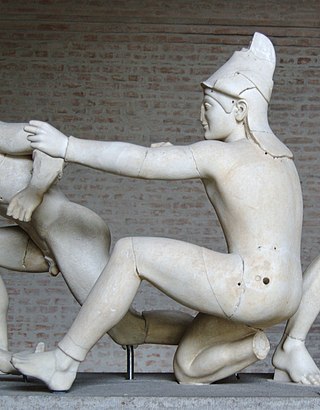
Marble has been the preferred material for stone monumental sculpture since ancient times, with several advantages over its more common geological "parent" limestone, in particular the ability to absorb light a small distance into the surface before refracting it in subsurface scattering. This gives an attractive soft appearance that is especially good for representing human skin, which can also be polished.

Wood carving is a form of woodworking by means of a cutting tool (knife) in one hand or a chisel by two hands or with one hand on a chisel and one hand on a mallet, resulting in a wooden figure or figurine, or in the sculptural ornamentation of a wooden object. The phrase may also refer to the finished product, from individual sculptures to hand-worked mouldings composing part of a tracery.

Stone carving is an activity where pieces of rough natural stone are shaped by the controlled removal of stone. Owing to the permanence of the material, stone work has survived which was created during our prehistory or past time.

Charles Allan Grafly, Jr. was an American sculptor, and teacher. Instructor of Sculpture at the Pennsylvania Academy of the Fine Arts for 37 years, his students included Paul Manship, Albin Polasek, and Walker Hancock.

Albin Polasek was a Czech-American sculptor and educator. He created more than 400 works during his career, 200 of which are displayed in the Albin Polasek Museum & Sculpture Gardens in Winter Park, Florida.
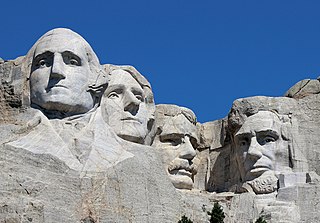
The history of sculpture in the United States begins in the 1600s "with the modest efforts of craftsmen who adorned gravestones, Bible boxes, and various utilitarian objects with simple low-relief decorations." American sculpture in its many forms, genres and guises has continuously contributed to the cultural landscape of world art into the 21st century.
The Piccirilli brothers were an Italian family of renowned marble carvers and sculptors who carved many of the most significant marble sculptures in the United States, including Daniel Chester French’s colossal Abraham Lincoln (1920) in the Lincoln Memorial, Washington, D.C.
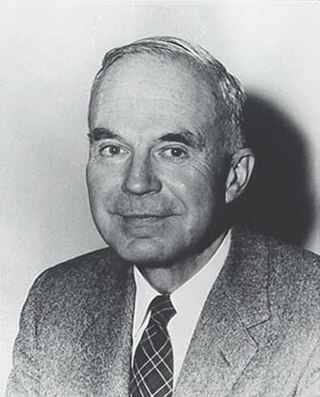
Walker Kirtland Hancock was an American sculptor and teacher. He created notable monumental sculptures, including the Pennsylvania Railroad World War II Memorial (1950–52) at 30th Street Station in Philadelphia, and the World War I Soldiers' Memorial (1936–38) in St. Louis, Missouri. He made major additions to the National Cathedral in Washington, D.C., including Christ in Majesty (1972), the bas relief over the High Altar. Works by him are presently housed at the U.S. Military Academy at West Point, the Library of Congress, the U.S. Supreme Court, and the United States Capitol.

The Albin Polasek Museum & Sculpture Gardens or The Polasek is a historic site in Winter Park, Florida, United States. It is located at 633 Osceola Avenue on three acres overlooking Lake Osceola. On May 2, 2000, it was added to the U.S. National Register of Historic Places.

Chauncey Bradley Ives was an American sculptor who worked primarily in the Neo-classic style. His best known works are the marble statues of Jonathan Trumbull and Roger Sherman enshrined in the National Statuary Hall Collection.
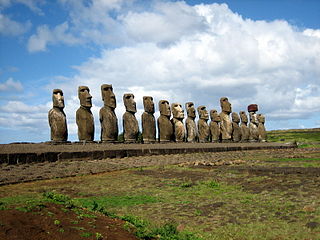
A stone sculpture is an object made of stone which has been shaped, usually by carving, or assembled to form a visually interesting three-dimensional shape. Stone is more durable than most alternative materials, making it especially important in architectural sculpture on the outside of buildings.

The Cimitero monumentale di Staglieno is an extensive monumental cemetery located on a hillside in the district of Staglieno of Genoa, Italy, famous for its monumental sculpture. Covering an area of more than a square kilometre, it is one of the largest cemeteries in Europe.

Farmer & Brindley was a firm of architectural sculptors and ornamentalists based in London, founded by William Farmer (1825–1879) and William Brindley (1832–1919).
Simon Verity (1945-2024) was a British sculptor, master stonecarver and letter cutter. Much of his work has been garden sculpture and figure sculpture in cathedrals and major churches. He has works in the private collections of King Charles III, Sir Elton John and Lord Rothschild.

Death and the Sculptor, also known as the Milmore Monument and The Angel of Death and the Young Sculptor is a sculpture in bronze, and one of the most important and influential works of art created by sculptor Daniel Chester French. The work was commissioned to mark the grave in Forest Hills Cemetery in Jamaica Plain, Boston, Massachusetts, of the brothers Joseph (1841–1886), James and Martin Milmore (1844–1883). It has two figures effectively in the round, linked to a background relief behind them. The right-hand figure represents a sculptor, whose hand holding a chisel is gently restrained by the fingers of the left-hand figure, representing Death, here shown as a winged female.

Forest Idyl is a bronze statue created in 1924 by Albin Polasek while he was head of the Sculpture Department at the Art Institute of Chicago. There are several copies of the three versions of this sculpture:
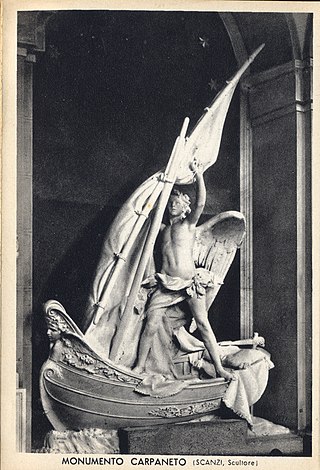
L'Angelo Nocchiero is a marble sculpture in the symbolist style by Genovese sculptor Giovanni Scanzi, completed in 1886. It was commissioned by Giacomo Carpaneto, Cav. Mauriziano (1811–1878) as a monument for his family tomb in the Monumental Cemetery of Staglieno in Genova, Italy. Along with the sculpture for the Oneto Family sculpted by Giulio Monteverde in 1882, the Carpaneto monument has become one of the most recognisable icons of Staglieno, appearing on an official cemetery brochure in 2014. Famous people of the 19th century visited Staglieno and commented on the work, which depicts an angel, standing astride a small boat, beginning to secure the sails at the end of a journey.

Roger (Ruggiero) Morigi was an Italian-born American stone carver and architectural sculptor. He made major contributions to Washington National Cathedral and other Washington, D.C. buildings. He was the teacher and mentor of sculptor Frederick Hart.
Ermelindo Eduardo Ardolino, known as Edward Ardolino was an Italian-born American stone carver and architectural sculptor of the early twentieth century. He was the most prominent member of the Ardolino family of stone carvers. He worked with leading architects and sculptors, including architect Bertram Grosvenor Goodhue and sculptor Lee Lawrie. Ardolino participated in at least nine Goodhue-Lawrie collaborations including the Los Angeles Public Library and the Nebraska State Capitol. His carvings adorn a significant number of important public and private buildings and monuments, including four buildings in the Federal Triangle of Washington, D.C.
References
- ↑ "Images of Walter S. Arnold's Washington National Cathedral carvings". Stonecarver.com. Retrieved November 12, 2013.
- ↑ Solberg, Marvin A. (2006). "Washington D.C. Sights - Walter Arnold". Archived from the original on November 21, 2007. Retrieved November 12, 2013.
- ↑ ""Lecture: Set in Stone: The Art of Carving" by Walter S. Arnold". Art Institute of Chicago. Archived from the original on April 6, 2012.
- ↑ "University of Chicago article "Cast In Stone" references Walter Arnold's biographical information, and a lecture and demonstration he gave during the 2008 Festival of Arts". Uchiblogo.uchicago.edu. Retrieved November 12, 2013.
- ↑ "The Oriental Institute of the University of Chicago - reference to an educational carving demonstration led by Walter Arnold". Oi.uchicago.edu. February 7, 2007. Retrieved November 12, 2013.
- ↑ Chicago Architecture Foundation Media Release with lecture listing. There have been additional lectures and demonstrations since. [ dead link ]
- ↑ Arnold, Walter S. Staglieno: The Art of the Marble Carver, Cincinnati: Edgecliff Press, LLC. 2009. Print. 88 pp. ISBN 978-0-9819271-4-5, LCCN: 2009933242. Much of Walter Arnold's biographical information can be corroborated with his biography in this published book.
- ↑ "Staglieno: The Art of the Marble Carver". Stonecarver.com. Retrieved November 12, 2013.
- ↑ "Stone Quarries and Beyond list of stone industry resources references Walter Arnold's book". Quarriesandbeyond.org. Retrieved November 12, 2013.
- ↑ "Anatomically Correct, Art in Alternative Spaces and Steppenwolf Theatre presented the exhibition, Rock, Paper, Scissors: A "battle" of works in stone, paper and metal, and reference Walter Arnold's biographical information". Anatomicallycorrect.org. August 29, 1999. Retrieved November 12, 2013.
- ↑ "Stone Sculpture|Sculptures|Statues|Animal Sculpture|Statue|Made USA". Stonecarver.com. Retrieved November 12, 2013.
- ↑ "Washington National Cathedral pamphlet describing Frederick Hart's Creation tympanum" (PDF). Archived from the original (PDF) on July 17, 2011. Retrieved November 12, 2013.
- ↑ "University of Chicago - reference to Walter Arnold's stone carvings on the Medici facade". Uchiblogo.uchicago.edu. Retrieved November 12, 2013.
- ↑ Blum, Hester. "Mahoney, Diana Phillips "More than just monkey business. (design of portals at Chicago's Lincoln Park Zoo's primate house)." Computer Graphics World 01, Nov. 1992. Print". Accessmylibrary.com. Retrieved November 12, 2013.
- ↑ "Image of Winged Victory at Citadel Center". Chicago /: Emporis.com. Archived from the original on October 19, 2012. Retrieved November 12, 2013.
{{cite web}}: CS1 maint: unfit URL (link) - ↑ "Images of Art Deco panels". Stonecarver.com. Retrieved November 12, 2013.
- ↑ "Daily Herald Calendar of Events". Dailyherald.com. April 17, 2008. Retrieved November 12, 2013.
- ↑ ""Upcoming Events" Planetary Studies Foundation News 18.1, (Spring 2008) 12" (PDF). Retrieved November 12, 2013.
- 1 2 "Albin Polasek Museum and Sculpture Gardens". The Saatchi Gallery. Retrieved November 12, 2013.
- ↑ "Polasek Calendar - February 2007, Thursday". Albin Polasek Foundation. Archived from the original on July 6, 2007. Retrieved November 12, 2013.
- ↑ "Orlando Weekly". Orlando Weekly. Retrieved November 12, 2013.[ permanent dead link ]
- ↑ "Anatomically Correct, Art in Alternative Spaces and Steppenwolf Theatre presented the exhibition, Rock, Paper, Scissors: "battle" of works in stone, paper and metal". Anatomicallycorrect.org. August 29, 1999. Retrieved November 12, 2013.
- 1 2 "Stone Sculptor, Walter S. Arnold Biography Page | Marble Carving". Stonecarver.com. Archived from the original on April 16, 1997. Retrieved November 12, 2013.
- ↑ Archived 21 October 2012 at the Wayback Machine [ dead link ]
- ↑ "Chicago General Tips - Reviews - VirtualTourist". Archived from the original on June 5, 2011. Retrieved November 21, 2009.
- ↑ "City of Aurora - Aurora Public Art Commission Garden Planting Party". Aurora-il.org. October 2, 2008. Retrieved November 12, 2013.
- ↑ Archived August 2, 2011, at the Wayback Machine